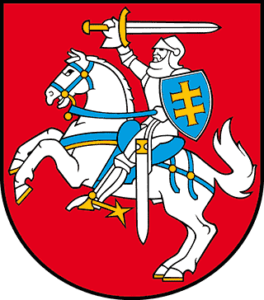As many readers know, nearly all electrical power transmission lines are three-phase AC (alternating current). When you look up at one of the towers, you see three (or a multiple of three) transmission conductors. In the US there are are only a few direct-current (DC) transmission lines. One of them is called Path 27. I first read about Path 27 about seventeen years ago, when I was writing the patent application that became US patent number 8183714. Recently I was able to do something that I had wanted to do for a very long time — I visited one of the massive ground electrodes for Path 27. Continue reading “A pilgrimage to Path 27”
Supercharging station with lots of plugs

This photo shows a charging station in Baker, California. At left are twelve Electrify America supercharging spots. At right are forty Tesla charging spots. Behind this is a construction area where there will soon be fifty more Tesla charging spots. All of these charging spots are shaded by canopies made of, you guessed it, photovoltaic solar panels. The Tesla charging station also has battery storage. Continue reading “Supercharging station with lots of plugs”
Terrifying Tales of the USPTO’s DOCX Filing System – the movie!
 On May 3, 2023, I urged you (blog article) to attend a webinar presented by two partners in the Fitch Even law firm, entitled Terrifying Tales of the USPTO’s DOCX Filing System. Hopefully you attended that webinar.
On May 3, 2023, I urged you (blog article) to attend a webinar presented by two partners in the Fitch Even law firm, entitled Terrifying Tales of the USPTO’s DOCX Filing System. Hopefully you attended that webinar.
But if you missed the live webinar, the good news is that Terrifying Tales of the USPTO’s DOCX Filing System is now available as a recording. To view the recording, click here.
You can also view recordings (click here) of my two recent webinars on the malpractice risks associated with use of the USPTO’s DOCX e-filing system.
A nice person at the EBC
Folks, I am reminded that there are bright and alert and nice people in the world.
I encountered a problem in Patentcenter recently. (For reasons that will become clear, in this posting I am going to avoid discussing the particular problem in detail.) I posted the problem in https://patentcenter-tickets.oppedahl.com/ as usual, giving it a new patentcenter trouble ticket number starting with “CP”. This was one of those trouble reports where a screen shot is part of explaining what the problem is that is being reported. Continue reading “A nice person at the EBC”
An open letter to Director Vidal and Commissioner Udupa about DOCX
Here is a letter that I sent today to the Director and the Commissioner:
Hello Director Vidal and Commissioner Udupa and Deputy Commissioner Seidel:
By now there have been many webinars scheduled and presented that are intended to help the patent community understand the risks of filing US patent applications using the USPTO’s DOCX initiative. These include:
-
-
-
- Patent Center DOCX Filing: What you Need to Know, March 10, 2023, Schwegman, Lundberg & Woessner
- Professional Liability Risks of Filing in DOCX – for users of Microsoft Word, April 18, 2023, Oppedahl Patent Law Firm LLC
- Professional Liability Risks of Filing in DOCX – for users of non-Microsoft word processors, April 18, 2023, Oppedahl Patent Law Firm LLC
- Professional Liability Risks of Filing in DOCX – for users of Microsoft Word, May 10, 2023, Oppedahl Patent Law Firm LLC
- Professional Liability Risks of Filing in DOCX – for users of non-Microsoft word processors, May 12, 2023, Oppedahl Patent Law Firm LLC
- Terrifying Tales of the USPTO’s DOCX Filing System, May 23, 2023, Fitch Even
-
-
You can see the May 10 recording here (1:29 in length) and you can download the presentation materials here.
I invite you and request you to let me know if you think there were any factual inaccuracies in the May 10 webinar. If there were any inaccuracies in that webinar, I will publish corrections.
Carl Oppedahl
Oppedahl Patent Law Firm LLC
Who would find these four webinars to be of interest?

(Update: now you can sign up for the four webinars! )
At this link you can see a plan for four webinars. The goal is to cover the PCT forms that PCT applicants and agents receive most often. Each webinar will be 90 minutes in length. The goal is to cover the forms listed and discussed in Oppedahl on PCT Forms and PCT Docketing, shown at right.
The question is, would anybody actually want to attend these four webinars? That’s what I would like to know. I invite people to post a comment below.
Recordings now available for May 10 and 12 webinars about DOCX risks
Hello readers! On Wednesday, May 10, 2023 I presented a webinar about the malpractice risks of e-filing a patent application in DOCX format under the USPTO’s DOCX initiative, for those who use Microsoft Word. On Friday, May 12, 2023 I presented a webinar about the malpractice risks of e-filing a patent application in DOCX format under the USPTO’s DOCX initiative, for those who use non-Microsoft word processors.
The webinars got recorded, and the recordings have now been edited into usable format for later viewing. You can see the May 10 recording here (1:29 in length) and you can download the presentation materials here. You can see the May 12 recording here (1:10 in length) and you can download the presentation materials here.
Recording now available for May 10 webinar about DOCX risks
Hello readers! On Wednesday, May 10, 2023 I presented a webinar about the malpractice risks of e-filing a patent application in DOCX format under the USPTO’s DOCX initiative. The webinar got recorded, and the recording has now been edited into usable format for later viewing. You can see the recording here and you can download the presentation materials here. (Update: the recording of the May 12 webinar is also now available.)
USPTO breaks its promise about protecting trademark applicant email addresses
The USPTO requires each trademark applicant to reveal its own email address when filing a US trademark application. The USPTO promises that if the applicant is represented by an attorney, then only the attorney’s email address will be revealed to the public, and:
Tthe email address listed in the owner field for trademark applicants who are represented by a qualified U.S. attorney will not be publicly viewable.
(TMEP § 803.05(b)). But, rather predictably, the USPTO has broken this promise. It turns out that the USPTO reveals the applicant email address to the public. Continue reading “USPTO breaks its promise about protecting trademark applicant email addresses”
The State Patent Bureau of the Republic of Lithuania becomes even more trendy, modern and up-to-date
 On July 1, 2023, the State Patent Bureau of the Republic of Lithuania will become even more trendy, modern and up-to-date. That is the date that the Lithuanian patent office will commence participation in the DAS system in four new ways:
On July 1, 2023, the State Patent Bureau of the Republic of Lithuania will become even more trendy, modern and up-to-date. That is the date that the Lithuanian patent office will commence participation in the DAS system in four new ways:
-
- as a Depositing Office for purposes of national industrial design applications,
- as a Depositing Office for purposes of national trademark applications,
- as an Accessing Office for purposes of national industrial design applications, and
- as an Accessing Office for purposes of national trademark applications.
The Lithuanian patent office has already been a participant in the DAS system since January 1, 2023 in these ways:
-
- as a Depositing Office for purposes of national patent applications;
- as an Accessing Office for purposes of national patent applications; and
- as an Accessing Office for purposes of PCT patent applications.
The two-letter code (ISO-3166 code) for this Office is “LT”. The web site of the Lithuanian patent office may be seen here.
